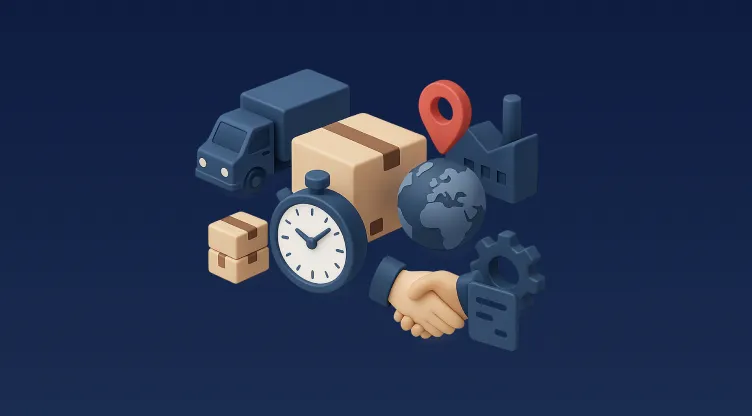In today’s digital-first retail environment, managing product returns efficiently is just as crucial as fulfilling orders. Customers expect clear, timely communication throughout the entire returns process—any lack of updates can cause frustration and lead to lost trust. With the rise of e-commerce across the MENA region and globally, reverse logistics and returns management have become core pillars of customer satisfaction and operational efficiency.
This blog explores how proactive communication, powered by modern technology solutions, can elevate the customer experience during returns. We’ll break down the essential touchpoints in the returns journey, reveal common communication challenges, and show how intelligent platforms like Omniful can transform the process.
Why Returns Management Communication Matters More Than Ever
Returns are no longer a pain point reserved for logistics teams—they are now a major customer experience factor. A smooth, well-communicated return process builds trust and encourages repeat purchases. In contrast, delayed refunds, unclear policies, or silent processing stages can tarnish even the best brands.
According to PwC’s Global Consumer Insights Survey, 86% of buyers are willing to pay more for a better customer experience. In the MENA region, where customer service expectations are rising rapidly in line with the e-commerce boom, brands must treat the returns journey as a strategic touchpoint.
The goal? Ensure customers feel just as confident during a return as they did while placing the order.
Mapping the Customer’s Returns Journey
To implement effective communication, we must first understand the steps in a typical returns process. Here’s what the journey looks like from a customer’s point of view:
- Initiation: Customer requests a return via the platform or contact centre.
- Approval: Return request is reviewed and approved, often requiring documentation or images.
- Pickup/Drop-off: Item is collected or handed over at a store or hub.
- Inspection: Item is examined for quality or eligibility.
- Refund/Exchange: Refund is issued or a replacement is sent.
- Closure: Confirmation is sent, and return is marked as resolved.
Each of these touchpoints is an opportunity to build trust through status updates.
Common Gaps in Returns Communication
Despite having clear processes, many retailers still face communication breakdowns. These issues often stem from outdated systems, siloed teams, or manual processes.
Some of the most common communication failures include:
- No confirmation after the return request
- Lack of updates after pickup or drop-off
- No visibility into inspection or refund timelines
- Generic or delayed notifications
- Failure to update order status across sales channels
These pain points not only frustrate customers but increase inbound queries, impacting support teams and operational costs.
The Role of Reverse Logistics in Customer Satisfaction
Reverse logistics is the backbone of any returns process. It includes transportation, inspection, restocking or disposal of returned goods, and processing refunds or replacements.
When reverse logistics is integrated with real-time communication tools, the result is a smoother, more transparent process. For example, customers receive a notification the moment an item reaches the warehouse, or when a refund is approved, removing the need for follow-ups.
Platforms like Omniful handle reverse logistics through a dedicated Returns Management System, offering:
- Customer return at doorstep or hub
- Reverse logistics automation
- Inspection and grading tools
- Refund integration with sales channels
- Real-time status APIs
These features ensure the customer is never left in the dark and brands can track returns KPIs with ease.
How Technology Solutions Power Seamless Communication
Let’s explore the core capabilities of modern technology platforms that elevate returns communication:
Real-Time Status Tracking
Systems like Omniful provide real-time updates for every return activity. From pickup to inspection, each stage is logged and communicated via SMS, email, or app notifications. This eliminates the anxiety gap customers often experience.
Returns APIs and Dashboards
Customers can view return status through branded portals or mobile apps. Retailers can configure automated status updates and tailor notifications by region, item category, or customer segment.
Multichannel Integration
Retailers in MENA often sell on multiple platforms—Shopify, Zid, Salla, Amazon.sa. Omniful ensures that return statuses sync across these channels, so customers get accurate updates regardless of where they made the purchase.
BORIS & RMA Workflows
Features like Buy Online, Return In-Store (BORIS) or Return Merchandise Authorization (RMA) flows are fully supported. These are especially important for omnichannel brands combining retail stores and online operations.
Inspection & Grading with Communication Triggers
When an item is received, it undergoes quality checks. Omniful allows businesses to set rules—if the product is damaged or used, the customer can be notified instantly with photographic evidence and next steps.
MENA Retail Case Study: Using Communication to Build Trust
One of the leading fragrance D2C brands in Saudi Arabia, Laverne, faced a high return volume due to their product category. They struggled with delayed inspections and refund approvals, causing customer dissatisfaction.
After adopting Omniful’s Returns Management System:
- Every return received a unique tracking ID.
- Customers were notified of each step: approval, pickup, inspection, refund.
- Refund time reduced from 7 days to 48 hours.
- Support tickets dropped by 35% due to fewer “where’s my return?” queries.
This real-world example shows how technology-enabled communication can significantly enhance returns experience.
Best Practices for Effective Returns Communication
To provide a seamless experience, businesses should follow these communication best practices:
Set Expectations Early
Make your returns policy clear at the point of purchase. Use visual aids like timelines and infographics to show what customers can expect.
Use Multiple Channels
Meet customers where they are. Whether it’s WhatsApp, SMS, email, or push notifications—use the right mix based on your audience.
Automate Triggers
Use event-based triggers to send updates automatically. For instance:
- “Your return request is approved”
- “Item received at the warehouse”
- “Refund has been issued”
Human Touch for Exceptions
Automation is powerful, but don’t forget personalisation. If a return is delayed or needs manual review, notify the customer with a humanised message.
Measure Communication Impact
Track metrics like response rate to notifications, time to refund, and customer satisfaction post-return. Platforms like Omniful include real-time dashboards and performance analytics to monitor this.
Connecting Returns Management with Brand Loyalty
A well-handled return doesn’t just prevent churn—it can actually increase loyalty. When customers know they can return without hassle and are kept informed, they’re more likely to trust your brand for future purchases.
In the MENA region, this is particularly true for sectors like fashion, cosmetics, electronics, and FMCG, where return rates are high. Retailers that simplify reverse logistics and maintain proactive communication will gain a competitive edge.
Future Trends in Returns Management Communication
As technology continues to evolve, expect these innovations to shape the future:
- AI-Powered Chatbots for return queries
- Blockchain-verified status updates for transparency
- AR & Visual Inspection Tools for remote return approvals
- Integrated Sustainability Messaging, e.g., “Your return saved 2kg of CO2 by using our green logistics”
Omniful is already building towards this future, with predictive analytics, API integrations, and returns automation capabilities that are ahead of market standards.
Conclusion: Make Every Return a Communication Win
Returns are inevitable—but frustration doesn’t have to be. With robust technology solutions and a proactive communication strategy, businesses can turn returns into a positive brand experience. In the MENA region, where logistics and e-commerce are evolving rapidly, companies must reframe returns not as a loss but as an opportunity to build long-term customer loyalty.
With Omniful’s powerful returns management suite, you can automate reverse logistics, update customers at every step, and simplify returns across all channels. Whether you're a growing D2C brand in Riyadh or a 3PL provider managing high-volume returns, now is the time to elevate your communication game.
Frequently Asked Questions (FAQs)
What is reverse logistics in e-commerce?
Reverse logistics involves moving goods from the customer back to the seller for purposes like returns, repairs, or recycling. It is a key component of returns management.
How can I reduce customer complaints during the returns process?
By sending proactive status updates at each stage and making your return process transparent, you reduce uncertainty and improve satisfaction.
Which MENA e-commerce platforms integrate with Omniful’s returns system?
Omniful supports integration with platforms like Shopify, Zid, Salla, and Amazon.sa for seamless return tracking and status updates.
Does Omniful support both doorstep and in-store returns?
Yes, Omniful enables both doorstep reverse logistics and in-store return processes (BORIS), providing full flexibility for omnichannel retailers.
How fast can refunds be processed with automation?
Depending on the inspection logic, refunds can be approved within 24–48 hours, reducing processing time and enhancing trust.
























